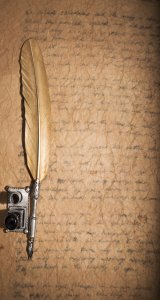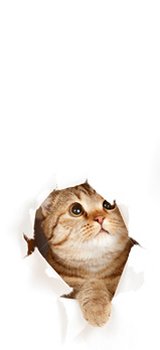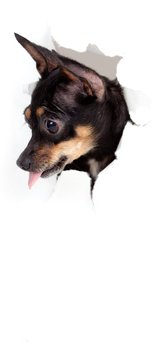Removing a Textured Pattern from a Scanned Photo ? 5 Minute Digital Fix
One of the most common problems when dealing with scanned photographs as part of a digital restoration activity is that after scanning, the digital image appears to have a textured pattern to it.
This is often caused by the fact that the photograph in question has been printed on textured photographic paper.
This article will show you how to remove the un-desirable pattern effect without significantly loosing any of the important image detail.
The problematic photo may well be an old black and white, sepia, or even a more modern colour photograph.
(I remember Kodak introducing their "Silk finish" prints many years ago printed on a silky sheen textured paper!).
The example image on our web-site is an old black and white wedding photograph that has been printed on a textured paper.
If you look closely at the white cornice behind the bride and groom you can clearly see that the textured pattern of the photographic paper has been faithfully re-produced during the scanning of the photo.
Before we commence any major restoration work we would like to remove as much of the un-desirable textured pattern as is possible.
Step 1
Open the image up in Adobe Photoshop and the first step is to create a duplicate (copy) layer of the original image by selecting Layer-> Duplicate Layer .. and give the new layer an appropriate name.
Zoom in close enough to get an appreciation of how severe the textured pattern is, but keep some picture detail visible (especially people's faces) so that you can easily judge how well the texture removal is proceeding without loosing too much important picture detail.
Step 2
With the duplicate layer active apply a Gaussian Blur by selecting Filter->Blur->Gaussian Blur ...
A pop-up option box will allow you to set the amount of Gaussian blur to apply to the image.
I generally start with a Radius = 1.5 and work up from there, constantly looking at the image to see the affect as I increase the blur radius.
Anything over a Radius = 5.0 will usually be far too harsh, so in the example on the web-site the required outcome is to "minimise" the texture pattern effect without compromising the important detail in the photo.
For our web-site example image I found I was able to set Radius = 3.5 without any significant loss of detail.
The example image is starting to "soften", but the textured pattern has clearly diminished.
Step 3
Zooming out to have a look at the complete photo reveals that the un-desirable textured pattern has all but vanished with only minor softening of the important image detail.
Each photo you work on will have to be judged on its own merits when determining the amount of blur to apply.
But all is not lost on retaining that important image detail!!
Step 4
Remember ... the Gaussian blur has been applied to the duplicate layer we created at the start of the exercise.
The original image, complete with texture, is sitting under the duplicate layer.
By using Photoshop's Layer Blending Modes and Layer Opacity we can produce an image made up of a combination of both layers with some of the detail from the lower original layer showing through.
Again, each photo will be judged on its own merits and the setting I finalised on for our example image on the web-site may not be the same as you will find most suitable for your own images.
Try experimenting with the different blending modes and layer opacity settings.
I finally settled on a blending mode of "Luminosity" and Opacity of 85% for the Gaussian Blur layer.
Step 5
To finalise the image I then "flattened" the two layers into a single image layer by selecting Layer->Flatten Image.
Step 6
I then checked the tonal range of our combined layered image using the Levels command by selecting Image->Adjustment->Levels ... and fine tuned the black, white and grey points.
Step 7
And last but not least, we can still bring a little bit more "sharpness" out of the image by finally applying a small amount of Unsharp Mask by selecting Filter->Sharpen->Unsharp Mask ...
Experimenting with the various settings, I was able to settle upon Amount = 185%; Radius = 2.5 pixels; and Threshold = 50 levels.
And there you have it ... the removal of an un-desirable textured pattern without significantly sacrificing important image detail.
If you find the steps being taken are a little hard to understand in this text based article, you can click on the link at the end of this article to see the same method explained on our website with the aid of example graphical images.
© Gary Wilkinson 2005 - All Rights Reserved
You can see this method complete with example images at Removing a textured pattern from a scanned photo
Feel free to re-print this article provided that all hyperlinks and author biography are retained as-is.
Gary Wilkinson is a photographer, photographic restorer and the owner of a photographic retail business. He is also the publisher of the http://www.restoring-photos-made-easy.com website, where other methods of correcting common photographic restoration problems are discussed.
|
|
|
|
|
|
|
|
|
|
|


A Guide to Underwater Camera Cases
If you are buying a new underwater camera or video... Read More
CCTV Camera Tip: Apply Simple Common Sense when Picking CCTV Cameras and Lenses
Get a good face shot: Use Higher quality cameras at... Read More
Making Money With Digital Photography And Live Events
A few years ago I became interested in digital photography,... Read More
Photography Success Without School
What I learned from a mentor that enabled me to... Read More
Digital Camera Basics
Digital Camera Basics? The VocabularyShopping for a digital camera can... Read More
Infrared Photography and Big City Crime
One of the major problems of the larger cities of... Read More
Taking Professional Quality Pictures
By now I'm sure you've used Either a digital or... Read More
How a Digital Camera Works
The digital camera is not something of a magic box... Read More
The Paradigm: Going Digital
As you might imagine the paradigm shift from traditional film-based... Read More
Terms Used The In The Stock Photography Business
So you are a small business person or web designer... Read More
Photography Poses ? The Missing Ingredient
You've read all the "best digital camera" articles, got the... Read More
How to Easily Start Up Your Own New Photography Business From Home
With modern technology in the form of SLR digital cameras,... Read More
Sony Digital Cameras - Always On The Innovation Frontier
Sony was the first company to introduce digital cameras into... Read More
Memories That Get Lost
How many people have pictures in a shoe box? In... Read More
8 Simple Tips for Taking Great Baby Photos
Taking pictures of your new baby is a great way... Read More
Photo Equipment Lists
You arrive at your photo shoot excited about the images... Read More
The Truth About Pixels, Part 2-1: Printing 4x3 Inch Photos
Why is a 3 megapixel camera better than a 1... Read More
Photography 101 Part 1
Photography 101 Part One Equipment: camera, meter, flash, tripod This... Read More
Digital Camera Auto Exposure and Auto Focus
The digital camera being a fantastic and technologically advanced device... Read More
10 Things You Can Do to Protect Your Photographs from Infringement
While it would be nice to live in a house... Read More
A Guide to Underwater Cameras
There are two types of underwater camera systems: an ""amphibious""... Read More
Removing Cracks and Creases when Restoring Old Photos ? 5 Minute Digital Fix
A common problem with old photos is that they often... Read More
Tame Those Memories
Family vacations, summer weddings and family reunions are in full... Read More
Everybody is Fixing Their House or Apartment Up These Days. Use That Digital Camera to Capture
That's right, you go through all the trouble of making... Read More
Understanding Digital Photography
Most serious photographers and all professionals use a Single Lens... Read More
Removing Spot Scratches in Your Treasured Photos ? 5 Minute Digital Fix
Probably one of the most common problems you will be... Read More
Better Photos with Your Digital Camera
Everyone has a digital camera today and we all take... Read More
Digital Camera Metering
Looking at the most intricate details of the digital camera... Read More
Basics of Photography
Understanding light is one of the very basic principles of... Read More
Where Do Great Ideas Come From?
At a Photo Club meeting I attended recently, the President... Read More
Crooked Horizons in Your Photos? ? Here is a Five Minute Digital Fix
Remember the good old photography days?Film camera in hand, you... Read More
Sepia Toned Prints from Your Colour or Black and White Photos ? 5 Minute Digital Fix
Quite often I will have clients bring in old photographs... Read More
Digital Cameras and Digital Photography
Before you rush into buying your digital camera this holiday... Read More


How a Digital Camera Works
The digital camera is not something of a magic box... Read More
The Truth About Pixels, Part 2-1: Printing 4x3 Inch Photos
Why is a 3 megapixel camera better than a 1... Read More
Choosing The Right Digital Camera
Let's get something straight right out of the box. If... Read More
Getting Rid of Red Eye
The photos you took of the party are really great... Read More
Digital Zoom Versus Optical Zoom
The digital camera is but a technological advancement of the... Read More
Photography 101 Part 1
Photography 101 Part One Equipment: camera, meter, flash, tripod This... Read More
Buying the Best Digital Camera for Your Needs
Choosing a digital camera can be a daunting task with... Read More
10 MORE Ways to Make Money with Your Digital Cameras
1. Pet photos - advertise a Pet Photography business where... Read More
Photography Workshops and Master Classes
Several years ago, I met a fellow photographer - albeit,... Read More
Seven Ways for Saving Your Digital Images Forever!
So, you have taken lots of pictures with your new... Read More
Infrared Photography and the Car Thief ? Successful Digital Imaging
Infrared photography is sometimes placed on the outside edge of... Read More
Digital Imaging Explained
Digital Imaging is a process where an electronic photograph, scanned... Read More
Digital Camera Memory - An Introduction
The digital camera is essentially a computer-based device, whose core... Read More
Start Up a Nude Photography Business
There are major obstacles to overcome to get into nude... Read More
Easy Tips for Digital Photo Touchups
Using a digital camera to take pictures is great. It's... Read More
Bracketing and How To Use Tt Correctly...
What Is... Exposure BracketingExposure bracketing is a simple technique professional... Read More
Move Up to the World of the Digital SLR Camera
A digital SLR camera or a single lens reflex (SLR)... Read More
Removing a Textured Pattern from a Scanned Photo ? 5 Minute Digital Fix
One of the most common problems when dealing with scanned... Read More
Make Your Digital Camera Batteries Last Longer
One technology that hasn't kept up with the rapid pace... Read More
Cropping Digital Photos Into Shape
Did you know that in many cases digital photos are... Read More
Creating Personalized Photo Calendars
About Personalized Photo Calendars:Photo Calendars are 12-month, wall-hanging calendars that... Read More
Online Photo Sharing: Not Just for Family and Vacation Photos
You may have joined the photo-sharing craze to share your... Read More
Is Film Better than Digital for Weddings?
As a professional wedding photographer I get this question asked... Read More
Black & White Photography
Photography is a diversified field of creating a spectral variety... Read More
Digital Cameras vs. Film Cameras- the debate goes on
One of the biggest debates in the photography world is... Read More
Basics of Photography
Understanding light is one of the very basic principles of... Read More
Four Unique Ways for the Pet Portrait Artist to Stand Out
The warm feelings are flowing all around when the pet... Read More
How To Make A Time-Lapse Video With Your Digital Video Camera
Getting the most out of your digital video camera can... Read More
Inspired Vision
A picture is worth a thousand words, so goes a... Read More
Buying Your Child A Digital Camera - What You Need To Know
Purchasing any gift item for your child is a mind-numbing... Read More
Light Meter Readings for Film and Digital
Reflected Light Readings for Film and Digital ImagesIn order to... Read More
Transfer The Digital Camera Images To Your Computer
There are a few very important tasks associated with using... Read More
A Guide to Underwater Camera Cases
If you are buying a new underwater camera or video... Read More
Photography |